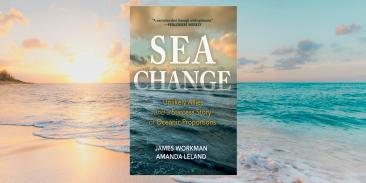How are air pollution and climate change connected?
Pollution from burning fossil fuels erodes air quality and heats up the Earth
The air pollution that’s killing millions of people and the pollution that’s warming our planet are intricately connected.
Finding solutions that address both will help us all breathe easier.
The same threats harm our health and our planet
Making electricity, hauling freight and manufacturing goods are just some of the activities that can produce pollution that contaminates the air and warms the Earth.
In particular, burning fossil fuels — in cars, power plants, factories and more — is both the largest source of air pollution and biggest cause of climate change.
When we burn fossil fuels, it produces greenhouse gases like carbon dioxide that warm the atmosphere, along with pollutants like soot and other tiny particles that can make us sick.
Air pollution is dangerous to our health, and it can be deadly.
According to the State of Global Air 2024 report, air pollution contributed to around 8 million deaths around the world in 2021, as it raises the risk of heart disease, stroke, diabetes, lung cancer, chronic obstructive pulmonary disease (COPD) and more.
Let’s protect what matters, together
How a warmer planet leads to unhealthy air
Our changing climate affects weather patterns, leading to:
- More stagnant air that traps pollution — Extreme heat can cause an air mass to hover over the same area for several days, boosting air pollution by preventing the pollution from clearing out.
- More smog — Higher temperatures can create conditions that lead to increased formation of unhealthy smog, especially during summers.
- More danger of accidentally releasing pollutants — Hurricanes and other extreme weather events are becoming worse, increasing the risk of industrial accidents that release toxic pollutants.
- More smoke from bigger wildfires — Severe heat and drought fuel wildfires, which produce smoke that contains harmful air pollutants that can affect people thousands of miles away. When wildfires burn human-made materials in buildings, they can release even more toxic pollution, as happened during the 2025 wildfires in Los Angeles County.
Ways we can improve our air and climate now
Because air pollution and climate change are connected, we have an incredible opportunity to fight both with the same solutions.
Increasing electric vehicle options, for example, can reduce transportation-related pollution. We see great promise with electric trucks and buses, including electric school buses, which help children breathe cleaner air.
Creating energy efficiency programs and shifting to renewable energy can cut power plant emissions while cleaning the air. The move to a clean energy economy is underway globally.
Finding and fixing natural gas leaks from energy companies and local utilities can limit emissions of methane — the main ingredient of natural gas and a major source of global warming — and cut toxic air pollution. Innovation is key to this goal.
Measuring local air pollution can empower communities, helping people identify sources of pollution and hold polluters accountable. EDF’s Air Tracker tool and our work with Google Street View cars to map air pollution block by block show how local monitoring can deliver crucial information on air quality.
We can clean our air and protect the environment for the next generation — if we act now to drastically cut pollution.










